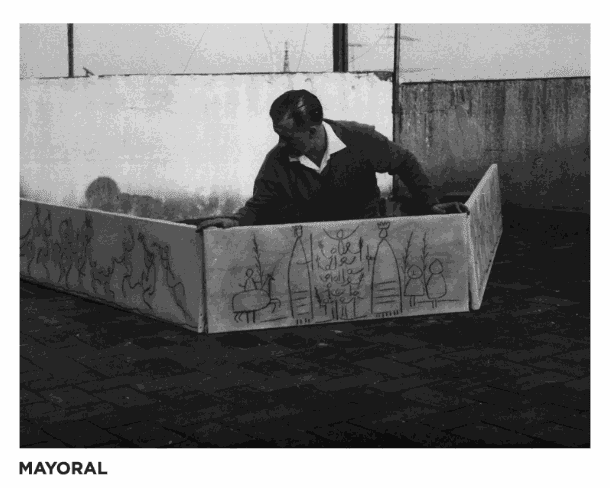Picasso. Human Landscapes: BARCELONA
The exhibition brings together paintings and drawings which are characters, bodies and faces from the landscape which most interested the artist: the human landscape. Victoria Combalía says that “he sought models, and during his life he fell in love, artistically and emotionally, with faces. His women were always very interesting faces for his painting. Obviously, there are also many other figures which interested him: men, old women or old men, children…”, as we can observe in one of the most important works in the exhibition: Groupe de personnages (Group of figures) (1960). In this charcoal on canvas, exhibited for the first time in this city, we can see children with Easter palms, more figures at the edges and a horse, also with palms. It is an original work, commissioned by the architect Xavier Busquets for the main facade of the headquarters of the Architects’ Association of Catalonia (COAC) in Barcelona: the Fris dels Gegants (Giants’ Frieze). Picasso was also the author of the side friezes on the facade and those inside the building, inspired by Mediterranean culture and elements characteristic of Catalan popular culture, such as the sardana or the “Tres Tombs”. Based on Picasso’s drawings, the Norwegian artist Carl Nesjar transferred them to concrete using the sand-blasting technique. The same Busquets, the construction manager, mentioned that you can see Picasso’s search for an essential simplicity, in line with the artist’s desire to rediscover primitive and synthetic roots which took up his whole life:
“On showing me the drawings, Picasso referred to his desire for synthesis and the effort of simplicity that they represented. I wouldn’t have been able to do this previously, he concluded literally”.[1]
From among the selection of works, we also highlight the 1965 oil on canvas Photographe et singe (Photographer and monkey), based on shading with pastel hues in which, as Combalía observes, the photographer —who is lying on a rug with his legs crossed upwards— is almost abstract. Finally, we mention two pieces with an erotic dimension: Nu, chèvre et oriental (Nude, goat and oriental) (1967), a drawing with rhythmic lines linked to the representation of the figure of the odalisque. On the other hand, in Trieu i remeneu (Search and choose) (c. 1902), the earliest work of the exhibition, Picasso represents two prostitutes studied by a possible client, with the characteristic style of the drawings of the time when he was becoming established at Els Quatre Gats in Barcelona, at the beginning of the 20th century.
As the writer and art collector Gertrude Stein indicated in the portrait that she wrote about the artist: “he always knew that people were the only interesting thing to him. […] The head, the face, the human body these are all that exist for Picasso”.[2]
[1] Busquets i Sindreu, Xavier. Els esgrafiats de Picasso en el Col·legi d’Arquitectes de Barcelona. Barcelona: Reial Acadèmia de Belles Arts de Sant Jordi, 1987, p. 14
[2] Stein, Gertrude. Picasso. New York: Dover Publications, Inc., 1938










